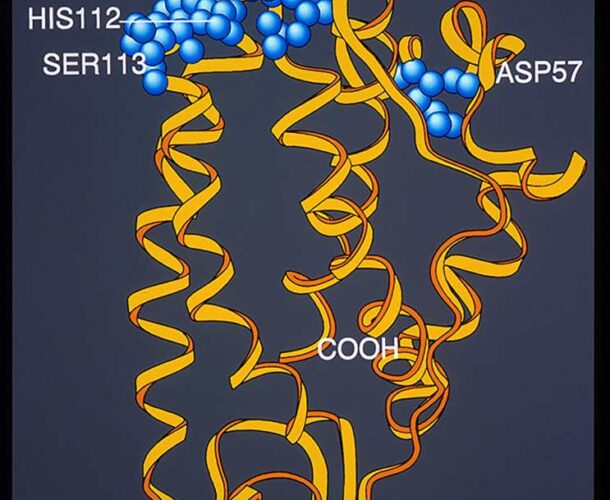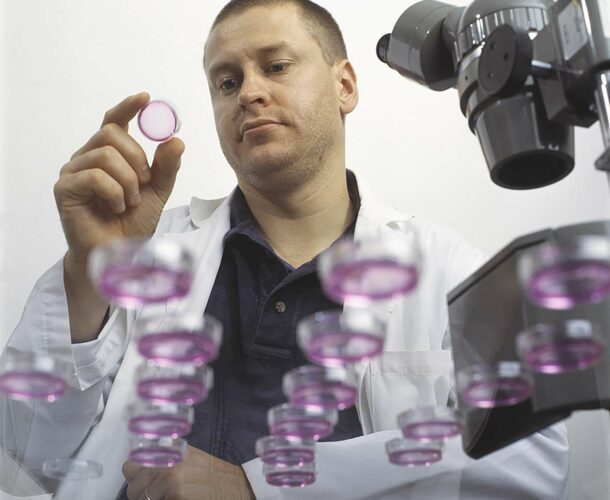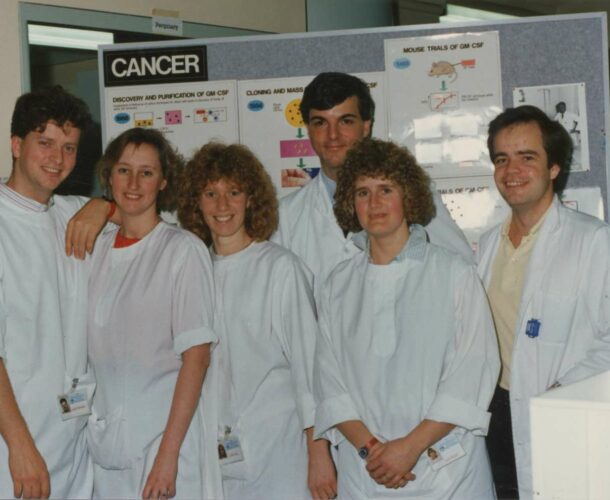Research led by Professors Tony Burgess, Nick Nicola and Don Metcalf has successfully purified a class of cell signalling hormones, or cytokines, called CSFs. Suspecting there are still more cytokines to discover that regulate blood cells, Nicola’s PhD student Professor Doug Hilton sets about purifying new cytokines. He makes a discovery that has unexpected implications for stem cell research.
Leukaemia inhibitory factor
Hilton, along with Dr Nick Gough and his molecular biology team of Professor David Gearing, Julie King and Tracy Willson purifies and clones a new cytokine. They name it ‘leukaemia inhibitory factor’ or LIF because of its effects on cultured leukaemia cells – when treated with LIF, rapidly dividing leukaemia cells, which resemble immature blood cells, change to a less rapidly growing and more mature state.
“It was three months to the day between when we got the first dot that may have been mouse LIF to completely cloning, sequencing and expressing both mouse and human LIF,” he recalls
“It was a cracker of a period. We just managed to scrape the first publication in that year (1987), writing day and night for a few days.”
The LIF molecule has gone on to underwrite a vast range of other research, becoming a vital tool for growing embryonic stem cells.
A growth factor for embryonic stem cells
A conversation in Melbourne between Gough and Dr Lindsay Williams from Germany suggests that LIF may have functions beyond the blood system. An international collaborative research effort is launched.
“As it turned out, the real excitement around LIF is that it is the factor that stops mouse embryonic stem cells from differentiating, which allows you to manipulate them genetically in culture,”1 Hilton says. This discovery is a boon for the field of stem cell research, as well as for the fledgling use of embryonic stem cells in the creation of ‘gene knockout’ models. Gene knockout technologies are to become a vast source of information about the function of diverse molecules in health and disease.








